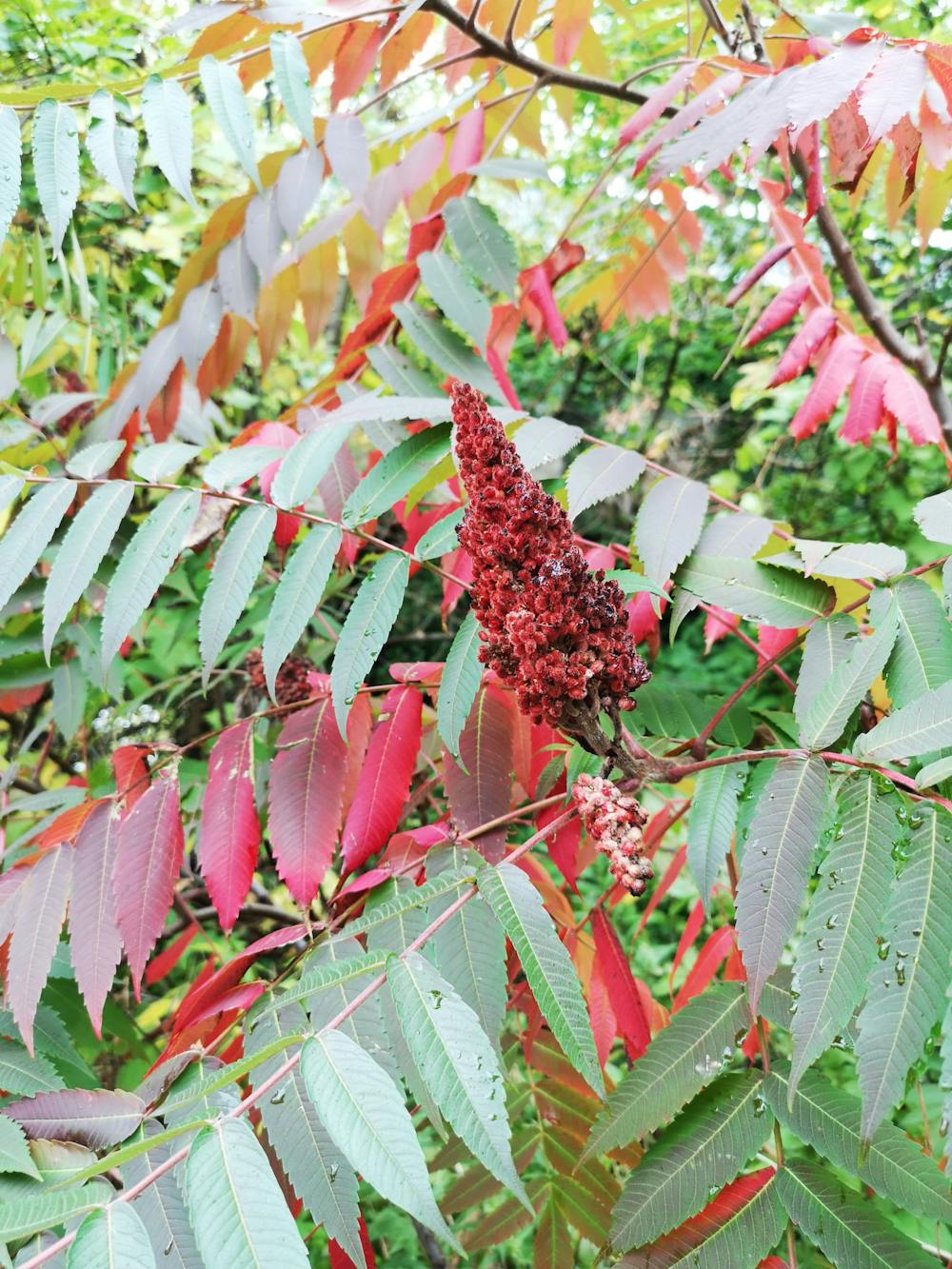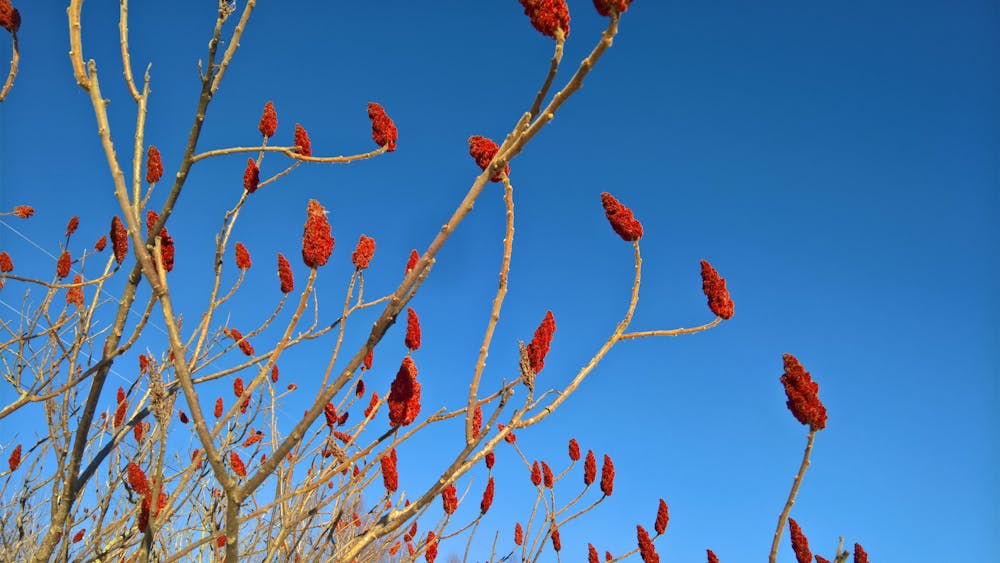By Mike Sherr
Editor-in-Chief
When you see a staghorn sumac (Rhus typhina), you might not instantly think that the tree provides anything edible. The branches of the tree have very tiny hairs that look almost spiky with alien looking red clumps of fruit. This tree is more than ornamental, however, as the red fruits are completely edible.
Staghorn sumac can grow in about any soil or air condition and can even thrive during droughts. It's known for its red berries and its beautiful fall foliage, making it common on lists of plants for native gardens.
Native gardens are an easy way for concerned foragers and gardeners to protect native species. These biodiversity sanctuaries not only promote the growth of native and possibly endangered species, but they also provide a habitat and nutrients to pollinators and other animals.
While wildlife preserves and parks can act as biodiversity islands, native ecosystems can grow into suburbs and rural areas through native lawns. This can connect different native islands and create an interconnected ecosystem of native plants.

The red staghorn sumac berries amongst the turning leaves as late summer switches into autumn (Photo courtesy of Flickr / "Staghorn sumac. Rhus typhina" by karen_hine. October 2, 2018).
There is a growing movement of environmentally conscious homeowners that is aiming to kill monoculture lawns across the United States in exchange for native gardens. Monoculture lawns only include one type of grass and is essentially a biological dead zone; other plants like weeds or wildflowers are stopped from growing entirely.
In communities that have a Homeowners Association, deeds to homes may have stipulations that lawns have to be well maintained and monoculture. Recently, however, residents within Homeowners Associations have been fighting back against these rules and growing large wild lawns. These lawns not only increase biodiversity, but they are feeding grounds for pollinators and native animals.
The New Jersey Agricultural Experiment Station lists the perfect plants to include in a native plant garden. While the staghorn sumac is not on this list specifically, there is no doubt that this native plant would be perfect for an ornamental native garden.
Staghorn sumacs attract pollinators, host insect larvae and bear fruits that are the perfect fall and winter food for songbirds. This sumac would be perfect for those interested in creating a pollinator garden that is full of more than just wildflowers. On top of that, staghorn sumac has deep root systems that help reduce soil erosion.
The clumps of fruit start to bloom in the spring and summer as white flowers that turn into the red berries as summer turns into fall. These fruits are edible, and while hard to reach on the top of the trees, have a tart flavor similar to lemons.
While these berries can be eaten right off the tree they are best used in a berry tea called sumac-ade. This drink can easily be made by just crushing up sumac berries in chilled water and straining out the chunks left over. The berries can also be dried and stored to use as an acidic seasoning perfect for dishes that cannot use a large amount of oils.




